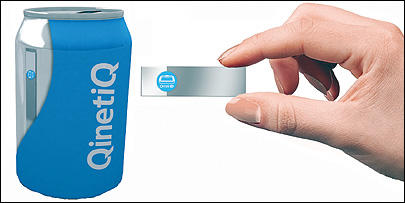When Wal-Mart and other retailers first issued tagging mandates, many suppliers responded by tagging RF-friendly products. But as suppliers scale up their RFID deployments—either to meet growing tagging requirements or to gain internal advantages—they’ll need to tag cases of soup, soda and other canned products, which are hard to read because metal reflects RF signals.
It’s possible to make an RFID smart label that can be read in a metal-heavy environment by adding foam to the label’s substrate, between the inlay and the adhesive. The foam provides a buffer that prevents the metal from interfering with the RF signal from the interrogator. But the foam also makes the smart label too thick to run through a conventional printer-encoder, which increases time and labor costs.

Now, several innovative solutions promise to make it easier to read UHF Gen 2 passive smart labels on cases of metal products. Last summer, ADASA introduced the Foam Attach Tag (FAT), a 4-by-1/2-inch foam-backed smart label that fits into its PAD3500 encoder, which can be worn on a belt and links to a user’s network via Wi-Fi. The PAD3500 does not print on the labels, it only encodes an Electronic Product Code to the inlay embedded in each. The labels are hand-applied to cases that already carry bar-coded shipping labels. ADASA is currently working with an end user on a pilot program to test how FATs work on its hard-to-tag products.
QinetiQ, a defense- and security-systems specialist, is working with Crown Holdings, a manufacturer of food and beverage packaging, to integrate QinetiQ’s Omni-ID chip technology into soda cans and other metallic packaging. Unlike conventional passive tags, Omni-ID tags do not use a conductive adhesive or strap to create an electrical bond between a chip and an antenna. Instead, the tag uses a conductive substrate that creates an electromagnetic field around the chip when the tag is interrogated. This field, says QinetiQ, is impervious to interference from metal or liquid. The companies say they expect to roll out Omni-ID-enabled packaging products soon.
A third option is a tag designed to be placed on top of an embedded foil liner integrated into a corrugated cardboard case. The solution was developed at the University of Kansas’s RFID Alliance Lab, a nonprofit research center that focuses on RFID system testing and evaluation, and which RFID Journal sponsors. Dan Deavours, the center’s director, says that the foil inside the case acts as an isolator so that the RF signals directed at the inlay won’t be reflected by the metallic content inside the case. The lab is working with tag and packaging manufacturers to license the tag design.

